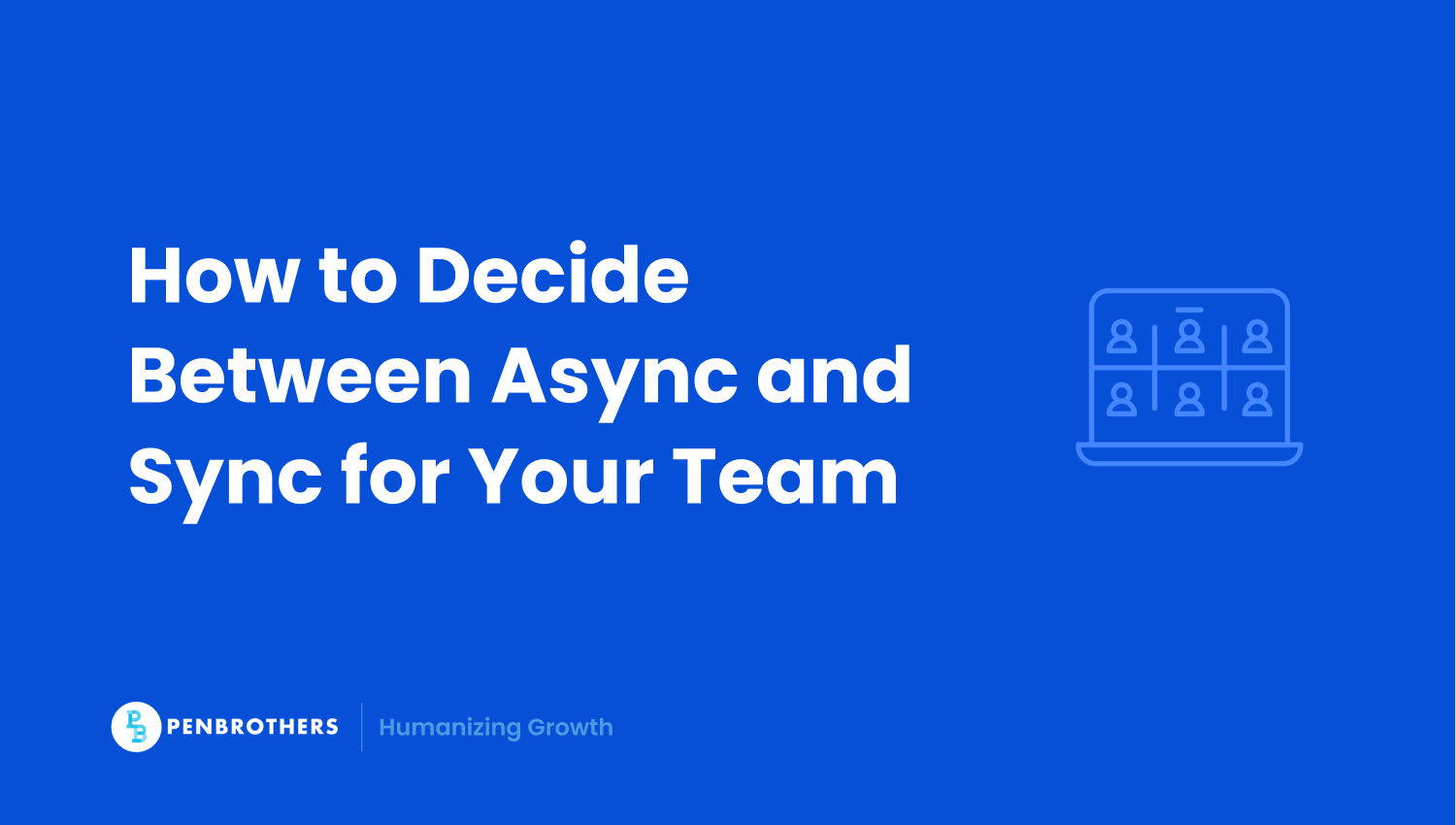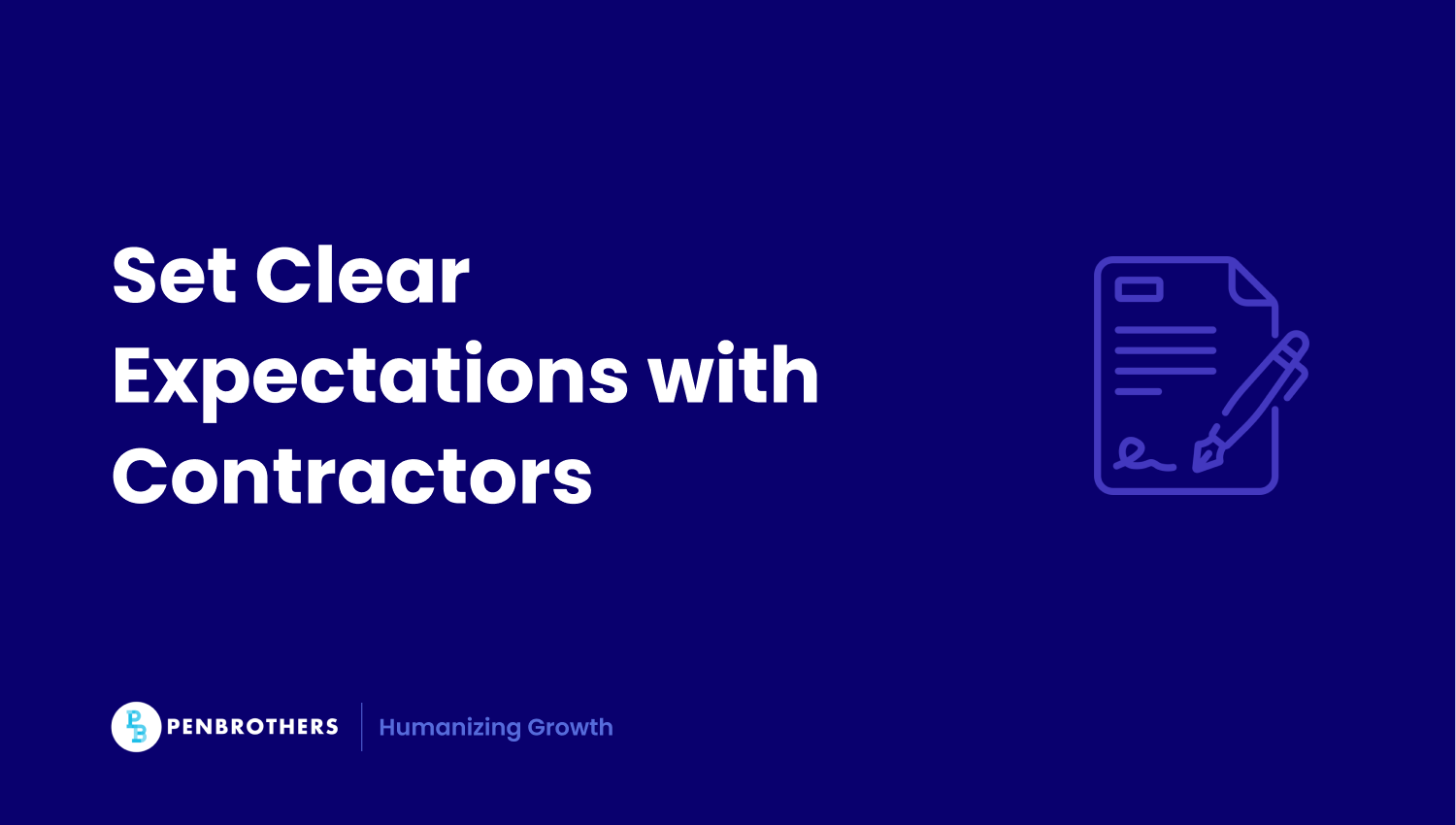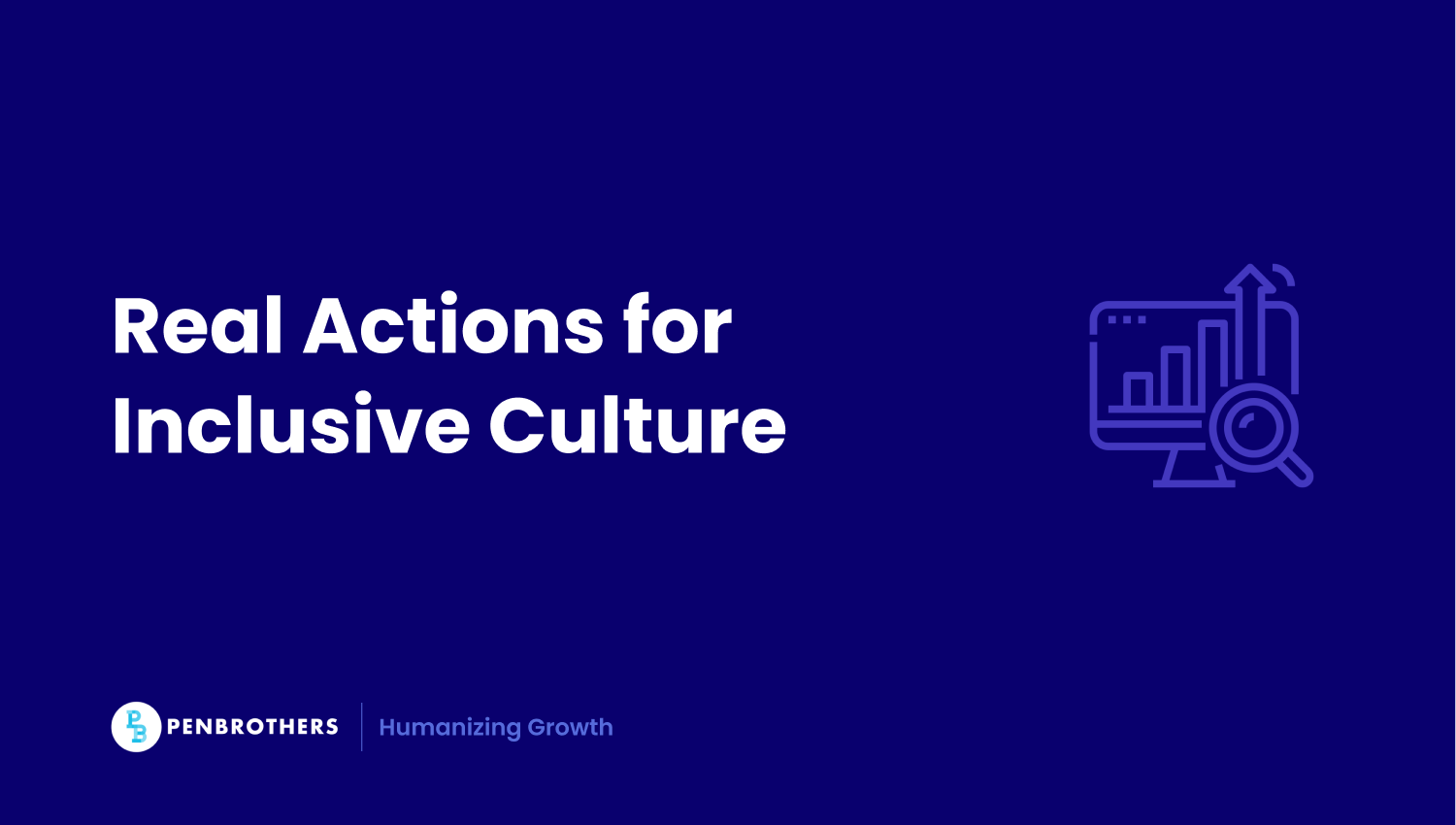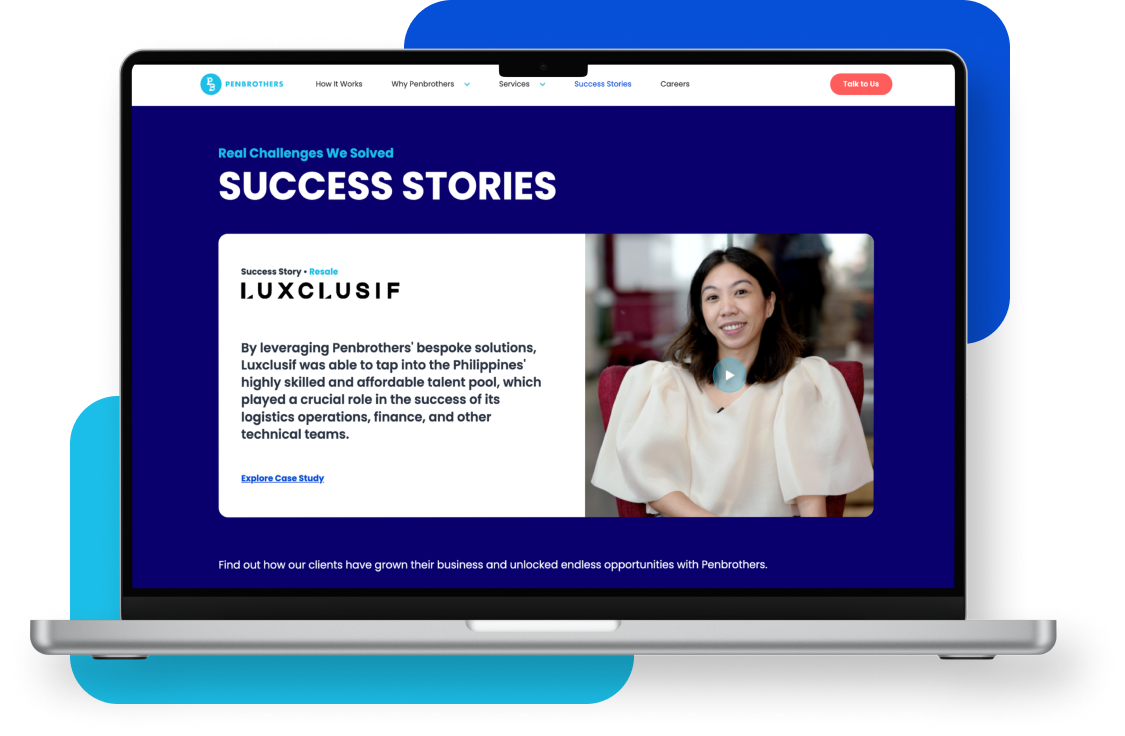What's Inside?
Async vs Sync: Choosing the Right Fit for Your Team

It’s 9 PM in New York. Julia’s still on Zoom with her team in Manila. Meanwhile, Ava’s fielding Slack pings across time zones before her first sip of coffee.
As global teams grow, so does the communication chaos. Endless meetings, missed handoffs, and update fatigue wear HR teams thin. The problem? Misaligned communication models.
That’s why choosing between async and sync isn’t just tactical, it’s strategic. The right mix helps HR leaders cut burnout and scale support across borders.
Sync vs Async, What’s the Real Difference?
At its core, synchronous (sync) communication happens in real time. It requires participants to be present at the same moment, whether on a Zoom call, live chat, or face-to-face in a meeting room. Sync is fast, immediate, and often best for emotionally charged or high-context conversations.
Asynchronous (async) communication, on the other hand, is time-shifted. It doesn’t require an immediate response and allows people to engage when it fits their schedule. Think emails, Loom recordings, Notion pages, or updates in project management tools. Async creates space for focus and deep work, crucial in global teams working across multiple time zones.
Modern workplace tools blur the boundaries. For example, Slack can be both:
- A sync channel when used for rapid-fire conversations
- An async tool when used for announcements, threads, or scheduled messages
This is where many HR teams go wrong. Without clear norms, these tools create noise rather than clarity.
Understanding how each tool functions—and when each mode is appropriate—is essential to building a communication culture that supports scale, not stress.
Want a deeper breakdown? Here’s a helpful primer on asynchronous work
Why It Matters for HR Leaders Scaling Remote Teams
As your team spans time zones and cultures, sync overload becomes a silent productivity killer.
According to Remofirst, remote workers save up to 2 hours per day by reducing unnecessary meetings and commutes. But without a structured async approach, that time gets eaten up by scattered sync touchpoints.
Async is especially powerful in HR because it:
- Eases time zone friction for hiring, payroll, and compliance ops
- Enables global HR coverage without doubling headcount
- Reduces burnout and promotes deep work in high-pressure teams
Meanwhile, synchronous moments are still vital, for culture, connection, and clarity. But they need to be intentional, not default.
And here’s a smart insight from the Microsoft Work Trend Index: employees now expect flexible work models to stick. In a hybrid, global world, communication isn’t just a tool, it’s your infrastructure.
When to Use Async (and Win Back Hours)
Async communication works best when tasks don’t require immediate input.
Best-fit use cases:
- Onboarding & SOPs: Record processes once, reuse often. Async onboarding scales efficiently and gives new hires a consistent experience.
- Policy & Benefits Announcements: Share updates through written posts or short Loom videos, with embedded links for reference, no need to gather everyone live.
- Feedback Collection: Use forms, comment threads, or video walk-throughs to gather input from stakeholders without scheduling bottlenecks.
- Cross-functional Projects: Document progress, assign tasks, and share updates in tools like Notion or Google Docs, keeping everyone aligned without real-time check-ins.
Recommended async tools:
- Loom: Great for recording explainer videos, especially for onboarding or walk-throughs
- Notion / Google Docs: Centralised, collaborative documentation
- Slack: Use threads, status indicators, and scheduled messages to reduce noise
- GSuite (Docs, Sheets, Slides): Ideal for shared HR calendars, reporting, and async decision logs
Benefits include more autonomy, better documentation, and inclusivity across time zones. Miscommunication drops when expectations and updates live in shared async systems.
When to Use Sync (and Avoid Misfires)
Synchronous interactions are best reserved for high-context or high-stakes moments.
Use sync when:
- Delivering sensitive feedback or conducting 1:1s: Performance reviews, coaching conversations, or career growth talks benefit from real-time connection and empathy.
- Making fast, high-stakes decisions across departments: When ambiguity is high and clarity is urgent, a quick sync can eliminate delays and misinterpretations.
- Reinforcing culture and connection: Team rituals like all-hands, celebrations, or onboarding kick-offs are moments to strengthen bonds and company identity.
- Resolving conflict or unblocking team dynamics: Real-time dialogue helps address tension or misalignment before it festers, especially in remote environments.
Best tools for synchronous collaboration:
- Zoom or Google Meet: For face-to-face discussions that require visibility, nuance, and trust-building
- Slack Huddles or quick calls: Useful for informal alignment, unblocking quick decisions, or resolving time-sensitive issues
Sync, done poorly, leads to burnout:
Defaulting to real-time meetings for everything drains focus, fragments the day, and pressures teams into synchronous availability, especially across time zones.
But when used intentionally, sync builds psychological safety, sharpens alignment, and accelerates momentum. It’s not about avoiding sync, it’s about making it count.
Pro tip: Follow every meaningful sync with clear documentation in your async system to reinforce decisions and maintain visibility for those who couldn’t attend.
Building the Right Mix for Easy Remote Jobs
So how do you choose between sync and async?
Start with this rule: Default to async. Escalate to sync when needed.
Here’s a quick decision matrix:
| Factor | Go Async | Go Sync |
| Time Zones | Distributed or global | Same or overlapping hours |
| Topic Urgency | Low to medium (e.g. policy updates) | High (e.g. urgent compliance issue) |
| Emotional Weight | Low (e.g. task updates, handoffs) | High (e.g. performance feedback, conflict) |
| Information Complexity | Low (e.g. SOPs, routine workflows) | High (e.g. change management, cross-functional planning) |
Why this matters:
- Async builds scalability. It frees up calendar space, documents knowledge, and allows teams to operate across borders without bottlenecks.
- Sync builds connection. It helps you navigate nuance, build trust, and make fast progress on sensitive or strategic issues.
The goal isn’t to choose one over the other—it’s to design communication as a system, not a series of meetings. And when HR teams get this right, remote jobs become easier to fill, manage, and grow.
Need help defining your async/sync culture? Explore how tools like the Culture Index can guide communication styles.
Common Pitfalls (and How to Avoid Them)
Adopting async doesn’t mean “set and forget.”
Watch for these common traps:
- Mistaking async for silence: Just because a message isn’t answered immediately doesn’t mean it’s ignored. Without clear response-time expectations, async can breed anxiety or inaction.
Fix: Establish norms like “respond within 24 hours” or use Slack status indicators to show availability. - Letting decisions drift: Async collaboration often lacks closure. Teams might discuss an issue across multiple tools—but fail to capture the final call.
Fix: Always document sync outcomes in a shared space. No decision should live only in someone’s memory or a private thread. - Turning Slack into a 24/7 sync feed: Tools like Slack and Teams are flexible—but without boundaries, they turn into endless, interrupt-driven channels.
Fix: Encourage use of scheduled messages, threads, and “Do Not Disturb” hours. Train your team to ask: Does this need a real-time reply?
Build the infrastructure for sustainable async:
- Create shared documentation hubs (Notion, Google Drive, etc.)
- Prep for every sync with async agenda setting
- Define communication modes per workflow (e.g. “project updates = async,” “decision calls = sync”)
With the right systems and team agreements, async isn’t just efficient—it’s empowering. It gives your HR function the scalability and calm it needs to grow across borders.
Bonus resource: How soft skills help remote teams avoid async misfires
Final Thoughts
According to an EY Global Survey, over 50% of employees globally would quit their jobs if not offered flexibility post-pandemic. Async communication isn’t just a process choice, it’s a competitive advantage in hiring and retention.
Get it wrong, and you burn hours and people. Get it right, and you unlock time, trust, and global scale.
Penbrothers helps fast-growing companies build remote HR teams that thrive in both async and sync setups. From onboarding to compliance, our offshore professionals integrate fast—so your team can stay focused.
Ready to scale HR with easy remote jobs that actually work? Let’s talk.
*This article was crafted with the support of AI technology and refined by a human editor.





